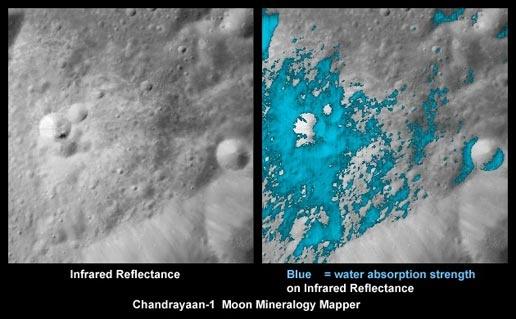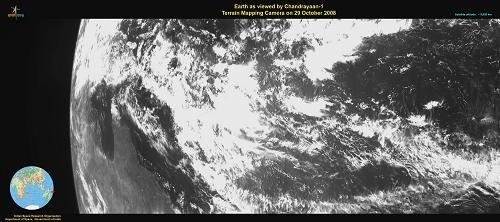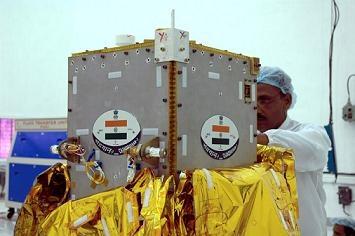Lunar Laser Ranging Instrument (LLRI), one of the 11 scientific instruments (payloads) carried by Chandrayaan-1 spacecraft, has successfully been turned ON today (November 16, 2008). The instrument was switched ON when the spacecraft was passing over western part of the moons visible hemisphere. Preliminary assessment of the data from LLRI by ISRO scientists indicates that the instruments performance is normal. LLRI sends pulses of infrared laser light towards a strip of lunar surface and detects the reflected portion of that light. With this, the instrument can very accurately measure the height of moons surface features. LLRI will be continuously kept ON and takes 10 measurements per second on both day and night sides of the moon. It provides topographical details of both polar and equatorial regions of the moon. Detailed analysis of the data sent by LLRI helps in understanding the internal structure of the moon as well as the way that celestial body evolved.
It may be recalled that earlier, three other payloads of Chandrayaan-1 Terrain Mapping Camera (TMC), Radiation Dose Monitor (RADOM) and Moon Impact Probe (MIP) were successfully turned ON. MIP, carrying Indian tricolour, was released from the spacecraft on November 14, 2008 and 25 minutes later, successfully impacted the lunar surface as intended. TMC took pictures of the Earth and moon when the spacecraft was on its way to moon. After reaching lunar orbit, TMC has been taking breathtaking pictures of the lunar panorama. RADOM was also switched ON in the Earth orbit itself.
The pictures and other scientific data sent by Chandrayaan-1 spacecraft from lunar orbit have been received by antennas of Indian Deep Space Network (IDSN) at Byalalu. The spacecraft operations are being carried out from the Satellite Control Centre (SCC) of ISRO Telemetry, Tracking and Command Network (ISTRAC) at Bangalore.


